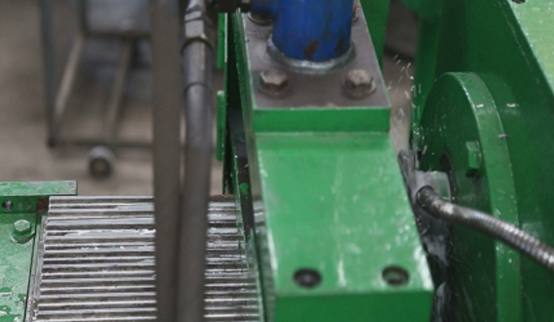 Afrikaans
Afrikaans  Albanian
Albanian  Amharic
Amharic  Arabic
Arabic  Armenian
Armenian  Azerbaijani
Azerbaijani  Basque
Basque  Belarusian
Belarusian  Bengali
Bengali  Bosnian
Bosnian  Bulgarian
Bulgarian  Catalan
Catalan  Cebuano
Cebuano  Corsican
Corsican  Croatian
Croatian  Czech
Czech  Danish
Danish  Dutch
Dutch  English
English  Esperanto
Esperanto  Estonian
Estonian  Finnish
Finnish  French
French  Frisian
Frisian  Galician
Galician  Georgian
Georgian  German
German  Greek
Greek  Gujarati
Gujarati  Haitian Creole
Haitian Creole  hausa
hausa  hawaiian
hawaiian  Hebrew
Hebrew  Hindi
Hindi  Miao
Miao  Hungarian
Hungarian  Icelandic
Icelandic  igbo
igbo  Indonesian
Indonesian  irish
irish  Italian
Italian  Japanese
Japanese  Javanese
Javanese  Kannada
Kannada  kazakh
kazakh  Khmer
Khmer  Rwandese
Rwandese  Korean
Korean  Kurdish
Kurdish  Kyrgyz
Kyrgyz  Lao
Lao  Latin
Latin  Latvian
Latvian  Lithuanian
Lithuanian  Luxembourgish
Luxembourgish  Macedonian
Macedonian  Malgashi
Malgashi  Malay
Malay  Malayalam
Malayalam  Maltese
Maltese  Maori
Maori  Marathi
Marathi  Mongolian
Mongolian  Myanmar
Myanmar  Nepali
Nepali  Norwegian
Norwegian  Norwegian
Norwegian  Occitan
Occitan  Pashto
Pashto  Persian
Persian  Polish
Polish  Portuguese
Portuguese  Punjabi
Punjabi  Romanian
Romanian  Russian
Russian  Samoan
Samoan  Scottish Gaelic
Scottish Gaelic  Serbian
Serbian  Sesotho
Sesotho  Shona
Shona  Sindhi
Sindhi  Sinhala
Sinhala  Slovak
Slovak  Slovenian
Slovenian  Somali
Somali  Spanish
Spanish  Sundanese
Sundanese  Swahili
Swahili  Swedish
Swedish  Tagalog
Tagalog  Tajik
Tajik  Tamil
Tamil  Tatar
Tatar  Telugu
Telugu  Thai
Thai  Turkish
Turkish  Turkmen
Turkmen  Ukrainian
Ukrainian  Urdu
Urdu  Uighur
Uighur  Uzbek
Uzbek  Vietnamese
Vietnamese  Welsh
Welsh  Bantu
Bantu  Yiddish
Yiddish  Yoruba
Yoruba  Zulu
Zulu Key Elements and Functions of a Conveyor System in Material Handling Operations
Components of a Conveyor System
Conveyor systems are an integral part of modern logistics and manufacturing operations, facilitating the transportation of goods across various stages of production and distribution. Understanding the components of a conveyor system is crucial for optimizing efficiency and ensuring smooth operations in any industry that relies on material handling. This article will outline the primary components of conveyor systems, their functionality, and their significance.
1. Conveyor Belts
At the heart of any conveyor system is the conveyor belt itself. The belt is a continuous loop made from materials such as rubber, plastic, or metal, designed to transport goods from one point to another. The selection of the belt material and design depends on the type of goods being transported, the environment, and the required durability. For instance, heavier or bulkier items may require a reinforced belt, while lighter goods can be efficiently moved with a standard rubber belt.
2. Idlers
Idlers are the rollers that support the conveyor belt and help maintain its alignment. These components are crucial in reducing friction and wear on the belt by providing a smooth surface for it to glide over. Idlers are typically made from steel or plastic and can be designed in various shapes, such as trough-shaped for carrying bulk material or flat for transporting packaged items. Proper idler selection and placement are essential for minimizing energy consumption and extending the lifespan of the conveyor system.
3. Drive Units
The drive unit is responsible for powering the conveyor system and driving the movement of the belt. It typically consists of a motor, gearbox, and pulleys. The motor transfers energy to the drive pulley, which then turns the belt. Depending on the application's requirements, drive units can be electric, hydraulic, or pneumatic. The choice of power source is influenced by factors like the operating environment, desired speed, and load capacity.
4. Pulleys
components of conveyor system

Pulleys play a crucial role in the operation of conveyor systems. There are two main types of pulleys drive pulleys and return pulleys. The drive pulley is connected to the motor and is responsible for propelling the belt forward, while the return pulley supports the belt as it cycles back to its starting position. Pulleys are designed with grooves or flat surfaces to accommodate different types of belts and ensure smooth movement.
5. Chassis and Frame
The chassis or frame is the skeleton of the conveyor system, providing structural support for all the components. Typically made from steel or aluminum, the frame must be robust enough to handle the weight of the materials being transported. It also plays a key role in determining the conveyor's height and alignment, ensuring optimal performance and safety.
6. Controls and Sensors
Modern conveyor systems are equipped with advanced control systems and sensors that enhance automation and efficiency. These controls can monitor the speed of the conveyor, manage the flow of materials, and even detect jams or malfunctions. Sensors can provide real-time data on the system's performance, allowing for timely maintenance and adjustments.
7. Safety Features
Safety is paramount in any industrial application, and conveyor systems are no exception. Common safety features include emergency stop buttons, safety guards, and automatic shut-off systems. Implementing these features helps prevent accidents and injuries, ensuring a safe working environment.
In conclusion, the components of a conveyor system work together seamlessly to facilitate the efficient movement of materials in various industries. By understanding each component's role, businesses can optimize their conveyor systems for enhanced productivity and safety. As technology advances, the future of conveyor systems promises even greater efficiency through innovative designs and automation solutions.
-
Revolutionizing Conveyor Reliability with Advanced Rubber Lagging PulleysNewsJul.22,2025
-
Powering Precision and Durability with Expert Manufacturers of Conveyor ComponentsNewsJul.22,2025
-
Optimizing Conveyor Systems with Advanced Conveyor AccessoriesNewsJul.22,2025
-
Maximize Conveyor Efficiency with Quality Conveyor Idler PulleysNewsJul.22,2025
-
Future-Proof Your Conveyor System with High-Performance Polyurethane RollerNewsJul.22,2025
-
Driving Efficiency Forward with Quality Idlers and RollersNewsJul.22,2025





























